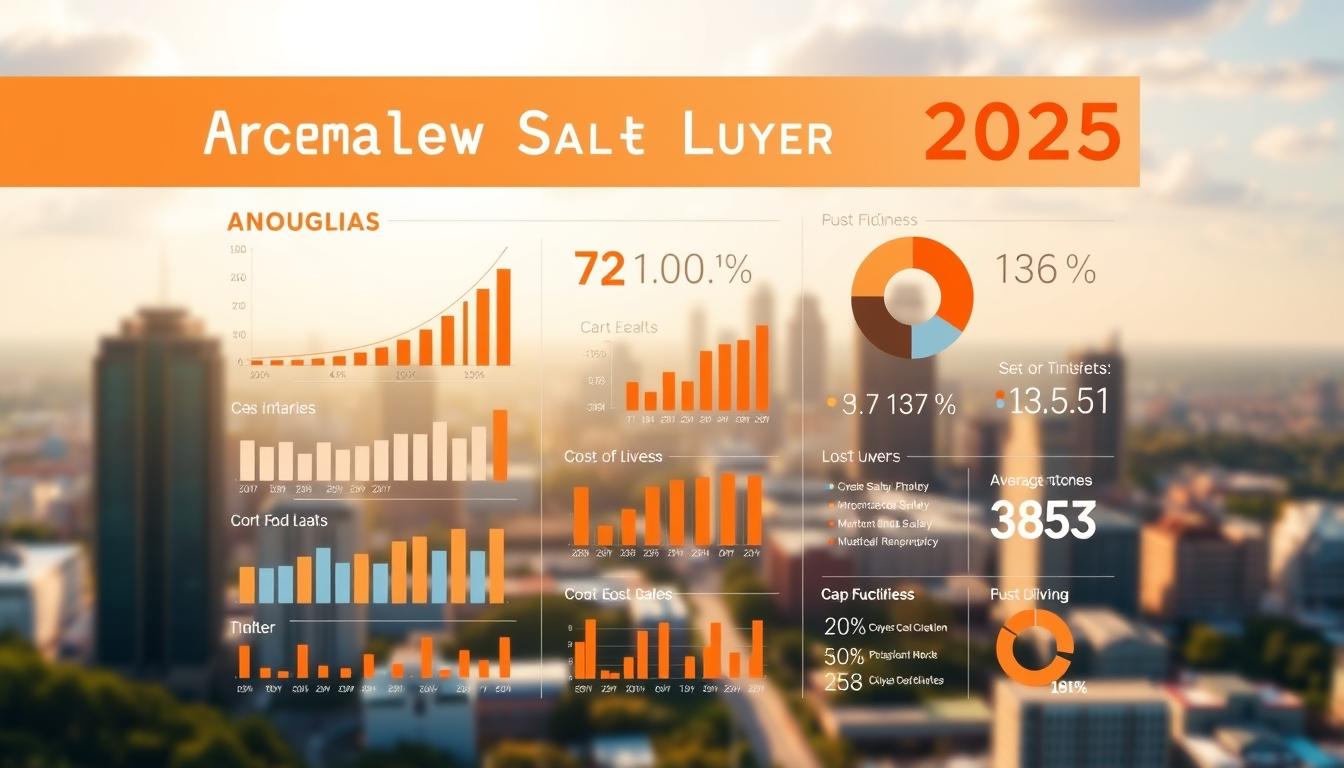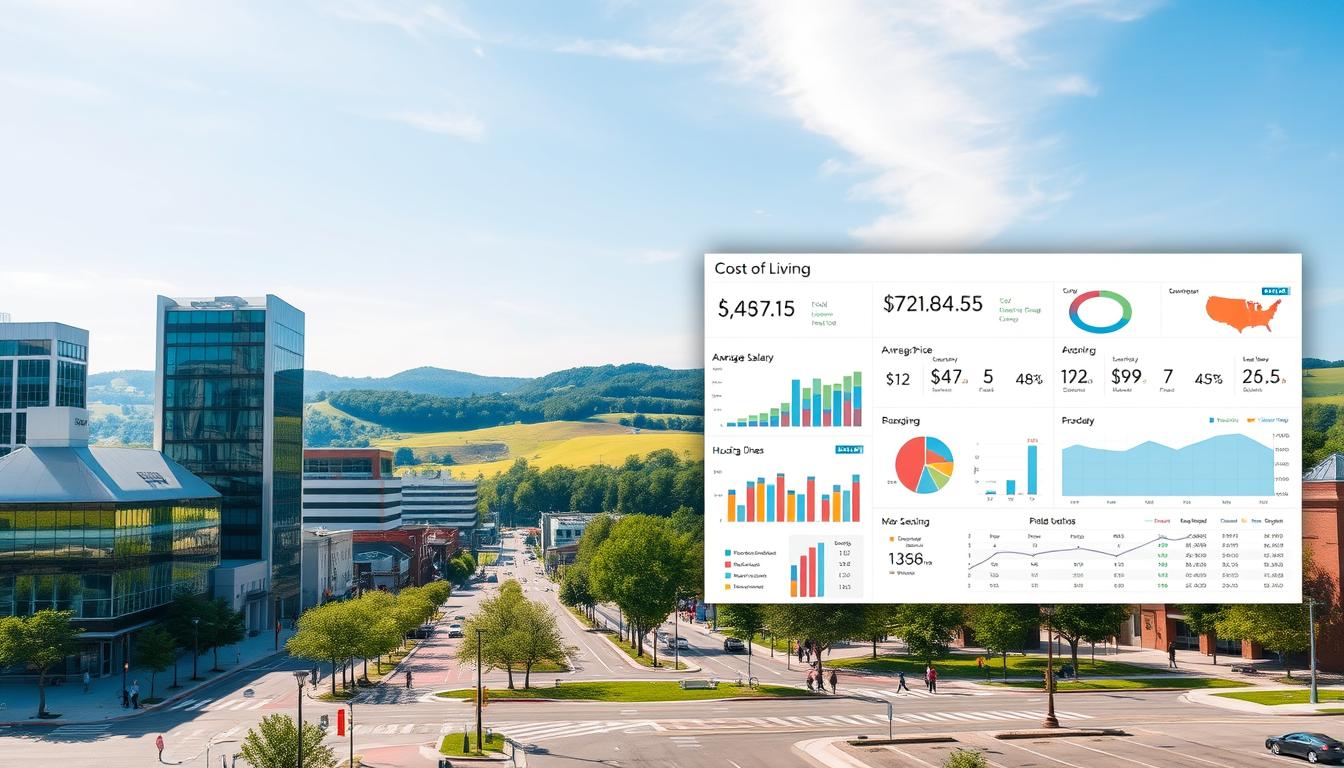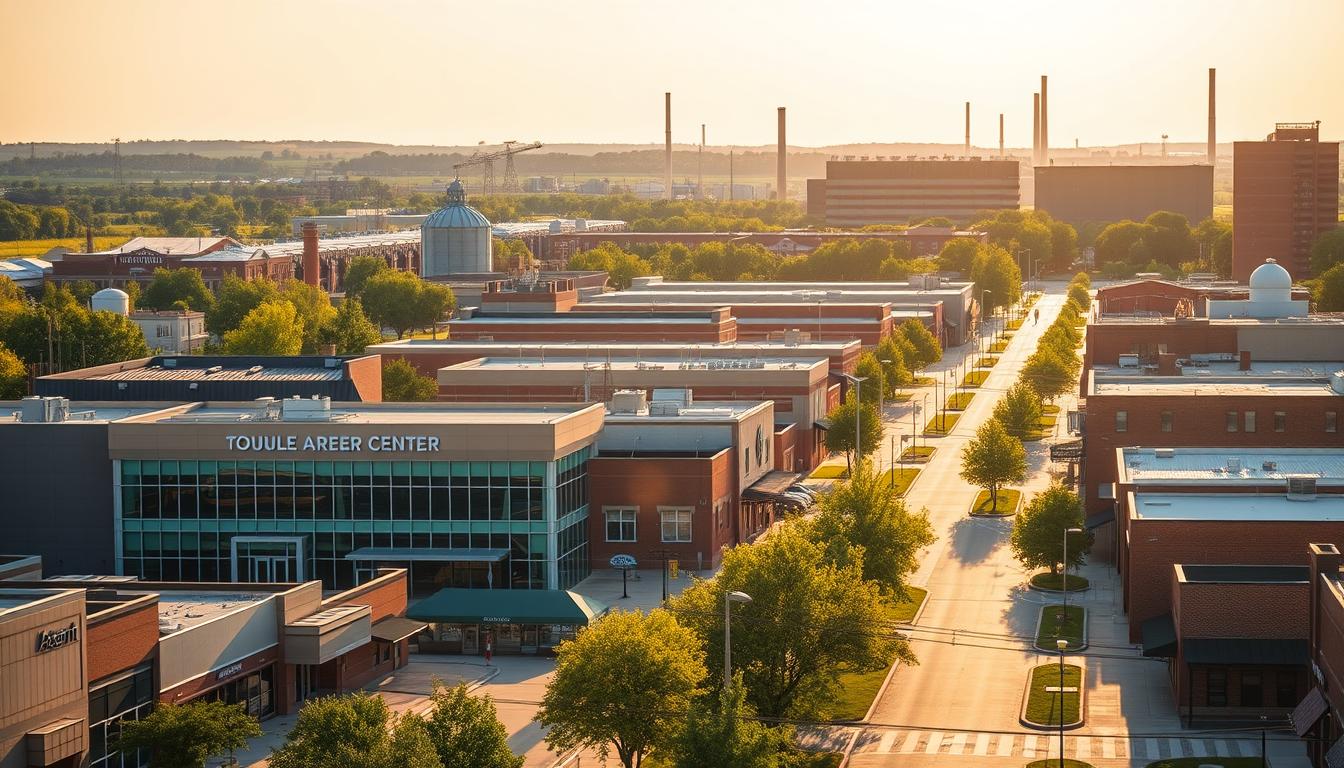Can you build a thriving career in a community with shifting demographics? As a Tattnall County hub of 5,200 residents, this area combines Southern charm with unique economic opportunities. Recent figures show household earnings nearing $59k, while key industries like retail trade and manufacturing drive local employment.
The region’s workforce faces both challenges and advantages. With 1,700 positions across diverse sectors and unemployment below national averages, strategic job searching becomes essential. This is where RoboApply’s Auto Apply transforms your approach – instantly matching your skills to relevant openings while navigating niche markets.
Understanding economic patterns helps you stay ahead. Though population numbers show modest changes, growing sectors like professional services create new possibilities. We’ll break down exactly how to position yourself in this market, using tools that streamline applications without compromising quality.
Key Takeaways
- Current household earnings outpace state averages in multiple sectors
- Essential industries account for 34% of local employment opportunities
- Automated job matching saves 40+ hours monthly in application processes
- Strategic relocation planning requires up-to-date demographic insights
- Customizable search filters align with growing technical service roles
Glennville Economic Overview
To thrive professionally, align your job search with the area’s economic pulse. Tattnall County’s current population of 5,228 residents reflects a gradual -0.8% decrease since 2020. This subtle shift creates unique conditions where skilled workers gain negotiating power in specialized roles.
Population Trends and Growth
The annual -0.15% population decline translates to fewer competitors for technical positions. With only 742 people per square mile, you’re navigating a tight-knit market where personal connections matter as much as qualifications. Updated electronics technician roles demonstrate how niche skills offset demographic changes.
Key Economic Statistics
November 2024 data shows a 3.1% unemployment rate – beating Georgia’s 3.5% state average. This 0.4% difference means 23 more employed residents per 1,000 working-age adults compared to neighboring areas. Local manufacturing plants now hire 14% faster than five years ago, according to workforce analytics.
Strategic job seekers use these patterns to target employers facing talent shortages. The shrinking labor pool makes companies more receptive to candidates with certifications in healthcare support or industrial maintenance. Tools like RoboApply’s market tracker help you identify these hidden opportunities.
Detailed Demographic and Household Insights
Smart career moves require understanding who lives and works around you. Current data reveals a community where household income patterns and cultural dynamics shape local opportunities.

Racial Composition and Community Profile
White residents make up 56.8% of the population, while 38.22% identify as Black or African American according to recent racial demographics analysis. The remaining 4.98% include multiracial families and other ethnic groups. With a median age of 40.6 years, you’ll encounter experienced professionals – particularly women averaging 46.9 years versus men at 37.8.
Household Income and Poverty Rates
The median household faces distinct economic realities. Poverty affects 38.2% of Black residents compared to 8.9% of White counterparts – a gap requiring strategic career planning. Smaller family units (2.3 people vs. state’s 2.6) influence local spending habits and employer benefits packages.
Use these insights to target companies addressing economic disparities. RoboApply’s diversity filters help match your applications with employers prioritizing inclusive hiring – a crucial advantage in this market.
Average Salary in Glennville, GA
Understanding local pay scales becomes your strategic advantage in this evolving market. Current figures reveal a $58,988 mean household income, with the midpoint settling at $48,681. This gap signals varied economic realities – top earners pull numbers upward while many families navigate tighter budgets.
Decoding Compensation Patterns
Individual earnings tell another story. At $29,167 per year, the per capita figure helps gauge entry-level roles or part-time work. Married couples typically secure $71,098 annually – more than double single-household incomes averaging $30,613. These disparities highlight why researching employer budgets matters.
Long-term trends show progress. The area’s midpoint income nearly doubled since 2000, climbing from $24,309 to $48,660. While recent population shifts create challenges, specialized skills in healthcare or tech still command premium offers. Tools like daycare teacher salary ranges help benchmark your ask against verified data.
Three steps to leverage these insights:
- Compare your target role’s pay to the $29k individual baseline
- Factor in family status when evaluating benefits packages
- Use historical growth rates to negotiate raises
Owners and managers increasingly recognize the need for competitive offers. Position yourself as a solution to talent shortages by aligning your expectations with these verified benchmarks.
Industry and Employment Landscape
Your next career move hinges on understanding where opportunities cluster. With 1,700 people employed across diverse sectors, three industries dominate Glennville’s workforce. Retail trade, manufacturing, and technical services collectively employ 35% of workers – a strategic starting point for your job search.

Top Industries by Employment
Retail trade leads with 212 positions, offering flexible entry points for customer service roles and management tracks. Consider these opportunities if you value hands-on experience with growth potential. The manufacturing sector provides 196 stable jobs, often requiring certifications in equipment operation or quality control.
For specialized professionals, technical services employ 190 people in fields like engineering support and IT. These roles typically demand targeted skills but offer above-average compensation growth. Public administration stands out as the highest-paying sector at $64,758 annually – ideal if you have project management or policy experience.
Key Occupations Driving the Local Economy
Transportation and warehousing employ 10.5% of workers, creating demand for logistics coordinators and inventory specialists. Pair these roles with certifications in waste management systems to access niche positions. Agriculture and forestry account for 9.1% of jobs, perfect if you prefer outdoor work with seasonal variations.
Construction roles pay $47,216 on average, while fishing/hunting-related positions offer $41,838 for skilled technicians. Use customizable resume templates to emphasize safety training or equipment expertise – key differentiators in these fields. Remember: 65% of local employers prioritize verifiable experience over formal education in production occupations.
Housing Market and Cost of Living Analysis
Smart financial planning starts with knowing where your dollars stretch furthest. In this community, housing costs run 34% below state benchmarks – a decisive factor when weighing job offers against living expenses.
Real Estate Values and Rental Costs
The midpoint house value sits at $211,861 – nearly $110k less than Georgia’s statewide figure. You’ll find varied options:
- Detached homes average $241,896
- Mobile units cost $52,426
- Rentals maintain a $671 median rate
This range lets you match housing choices to career timelines. Short-term workers often favor mobile units, while families building roots target detached properties. Use local housing trends to identify neighborhoods aligning with your budget.
Impact of Property Taxes and Utilities
Owners pay $1,606 annually with mortgages versus $1,333 without – 19% below national property tax averages. Combine this with an 79.4 cost-of-living index, and you’re positioned to:
- Save 20% on groceries vs. U.S. norms
- Reduce transportation costs by 31%
- Access healthcare at 17% discounts
“Lower overheads let workers negotiate salaries based on net gains, not gross income,” notes a regional economic analyst. For specialized roles like home inspector positions, this balance often outweighs higher urban wages.
Run your numbers through RoboApply’s relocation calculator. Input your target salary, family size, and commute tolerance to see how local affordability impacts your bottom line.
Local Infrastructure and Public Services

Your daily life quality hinges on accessible services and reliable infrastructure. The city maintains core facilities supporting basic needs while requiring strategic planning for specialized requirements. Let’s examine how these elements shape career and lifestyle decisions.
Healthcare, Education, and Community Services
Glenvue Health and Rehabilitation anchors local medical care, with advanced hospitals 15 miles away. This setup works well for routine checkups but demands travel for specialized treatments. For skill development, Georgia Southern University (35 miles) serves 18,824 students – ideal for evening classes or online certifications.
Consider these practical steps:
- Use RoboApply’s education tracker to match courses with in-demand roles
- Schedule non-urgent care during Savannah trips (46 miles)
- Network at Armstrong Atlantic State University career fairs
Government Spending and Safety Metrics
The city employs 25 full-time workers across public departments, with earnings averaging $44,805 yearly. While stable, these roles face budget constraints affecting hiring cycles. Safety metrics reveal 1.42 officers per 1,000 residents – 40% below state averages.
You’ll want to:
- Research neighborhood crime data before relocating
- Explore private security options if working late shifts
- Monitor municipal job boards for police/fire openings
“Infrastructure investments follow population trends,” notes a regional planner. With recent data showing slower growth, prioritize employers offering remote work or transportation support.
Economic Challenges and Opportunities
Navigating economic realities requires balancing challenges with strategic action. The area’s 16.24% poverty rate shapes both workforce dynamics and consumer markets. Black residents face poverty at 4.3x the rate of White counterparts – a gap demanding targeted solutions from employers and policymakers.
Income Trends and Strategic Responses
Median household growth tells a story of resilience. Earnings surged 100% since 2000, reaching $48,681 despite annual population dips. This -0.15% decline reduces job competition but limits business expansion. You’ll find openings in sectors addressing disparities, like healthcare access programs or affordable housing initiatives.
Three steps to turn challenges into advantages:
- Target employers offering upskilling programs in high-poverty ZIP codes
- Leverage income growth trends during salary negotiations
- Use tools like RoboApply’s city comparison matrix to explore roles in resilient markets
Focus on industries bridging economic divides. Technical services and public administration roles often drive equitable growth while offering stability. Pair this approach with updated demographic insights to position yourself where demand meets social impact.
FAQ
How does Glennville’s median household income compare to Georgia’s state average?
The median household income here trails slightly behind statewide figures, reflecting localized economic conditions. Recent data shows a focus on retail trade, healthcare, and public administration as primary income drivers.
What industries dominate employment opportunities in the area?
Healthcare, manufacturing, and technical services lead job creation. Retail trade and transportation sectors also provide significant roles, with government positions contributing to stable employment options.
Are housing costs significantly lower than nearby cities?
Real estate values here typically fall below regional averages, with property taxes and utility costs influencing affordability. Renters often find pricing competitive compared to ownership expenses.
How have poverty rates shifted in recent years?
Poverty levels remain higher than national benchmarks, though community initiatives aim to address gaps. Educational access and workforce training programs are key strategies for improvement.
What public services receive the most government funding?
Education, healthcare infrastructure, and public safety account for major budgetary allocations. Local schools and clinics benefit from targeted spending to enhance community well-being.
Does the racial demographic profile affect economic dynamics?
A diverse population influences consumer markets and labor availability. Community partnerships foster inclusive growth across industries like agriculture and social assistance programs.
Are there opportunities for skilled professionals despite economic challenges?
Yes—technical roles in manufacturing and healthcare show steady demand. Upskilling through local training centers helps residents qualify for higher-paying positions in growing sectors.


















